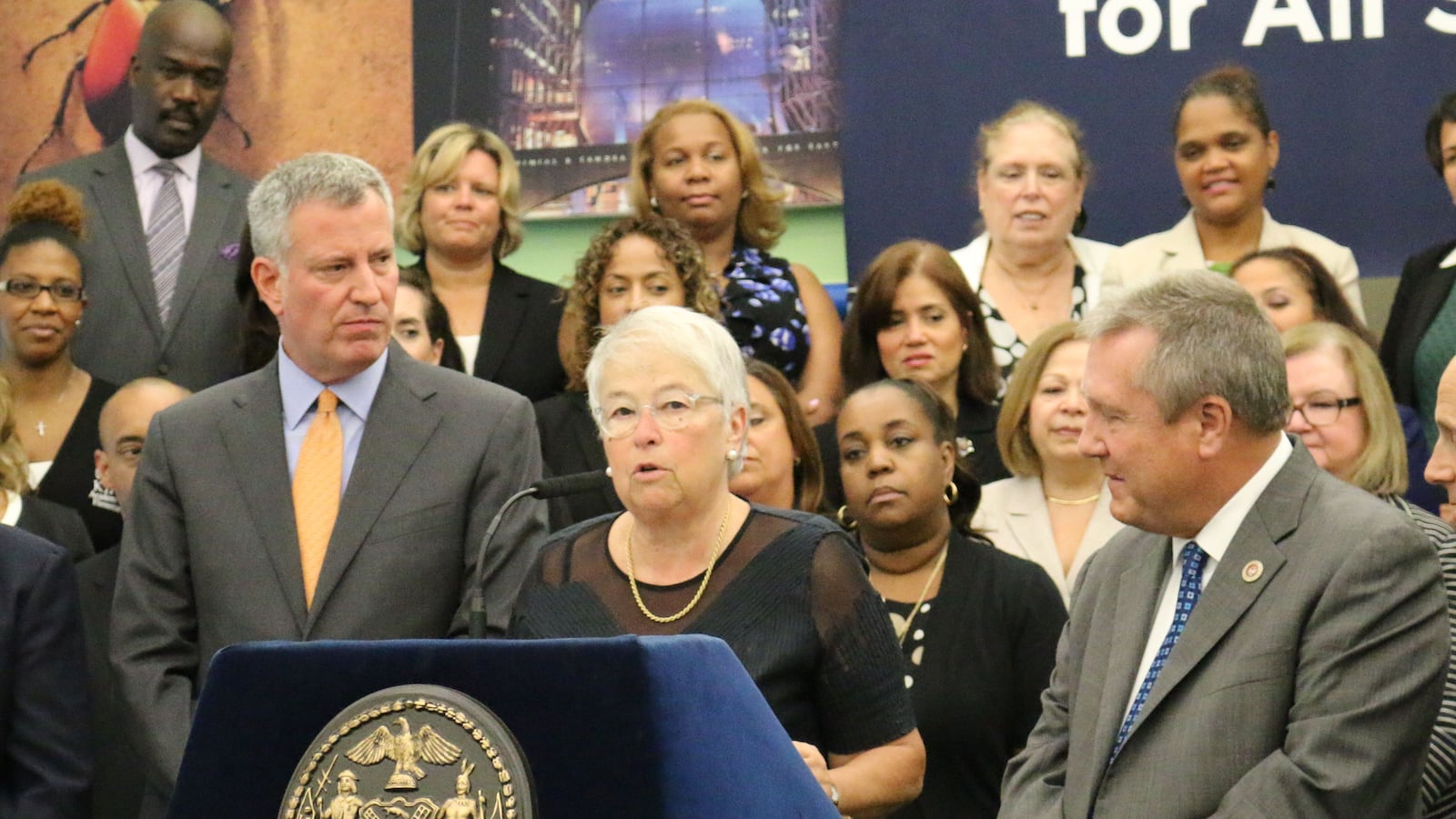Chancellor Carmen Fariña is again drawing criticism from school integration advocates — this time for appearing to excuse racially segregated pre-K programs as products of “parent choice.”
When asked about diversity in the city’s pre-K program at a state budget hearing Tuesday, Fariña seemed to skirt the issue:
“The pre-K parent, rightly so, wants whatever pre-K program is closest to home. They’re in a rush to get to work. They have to do what they have to do. And the one thing that I can say [is] that all our pre-K programs are the same quality … Whether you’re taking a pre-K in Harlem or you’re taking a pre-K in Carroll Gardens, you’re going to have the exact same curriculum with teachers who have been trained the exact same way. But I, as a parent, am not going to be running to another part [of the city]. So it’s a matter [of] applying. Parents apply. This is parent choice — the same way you can go to private school, parochial school, charter school, you can go to any pre-K. You have an application process, you fill it out. And generally, this year, I think people got one of their first top choices, pretty much across the city. So this is about parent choice. … So I actually do not agree with this. I think if you’re counting faces, then it’s true. If you’re counting parent choice, it’s totally different. So I think to me diversity is also, we are now taking more students with IEPs [Individual Education Plans] in our pre-K programs. We are taking more students who are English Language Learners in our pre-K programs. Diversity has many faces.”
Fariña’s response didn’t sit well with some integration advocates, who want the chancellor to offer a more forceful commitment to tackling diversity issues.
“It’s basically an argument for separate but equal — that what really matters is drilling down on resources and teachers,” said Halley Potter, who has studied segregation in New York City’s preschools as a fellow at the think tank the Century Foundation. “The problem with that argument is that, in practice, that is rarely if ever true.”
In a recent study, Potter found that the city’s pre-K program is highly segregated. In one in six pre-K classrooms, more than 90 percent of students come from a single racial or ethnic background. And, Potter said, research shows quality goes hand-in-hand with diversity: Children in mixed pre-K classrooms learn more and are less likely to show bias.
Matt Gonzales heads school integration efforts with the nonprofit New York Appleseed. He said excusing segregation as a by-product of parent choice seems to “completely absolve officials” from taking steps to increase diversity in pre-K classrooms.
“That’s disappointing because we’re in a place where we’re looking at ideas and potential solutions to segregation in the city, and I worry whether pre-K is being left out,” he said.
The city called the critique unfair. “By any measure, these are extreme mischaracterizations of a thoughtful response on our commitment to pre-K quality,” Department of Education spokeswoman Devora Kaye wrote in an email. “Divisive rhetoric doesn’t move us towards solutions. The chancellor has always been committed to inclusive schools and classrooms, and we’ll continue our efforts to strengthen diversity in our schools.”
This isn’t the first time Fariña struck observers as tone-deaf on diversity. In October 2015, she suggested rich and poor students could learn from each other — by becoming pen pals.
The city has taken some steps to integrate pre-K classrooms, allowing a number of schools to consider “Diversity in Admissions.” But as of September, the program is only open to public schools, and the majority of pre-K centers in New York City are privately run.
Mayor Bill de Blasio and the Department of Education have said they are working on a plan to improve school diversity, and hope to release details by the end of the school year.
Monica Disare contributed to this report.

